Which Fencing Plants Make The Best Hedges In Kenya
In this post, we will give you a list of the best fencing plants to grow in Kenya for the best hedges. These can give you thick and secure barriers keeping people and animals away from your home and property.
Natural or live fences have an aesthetic value in colors, aroma and beauty of an appealing landscape. Fencing plants and shrubs can attract songbirds, butterflies, bees and other desirable fauna. The trees acts as windbreakers, can absorb noise and dust keeping your property safe. Besides, the hedges will absorb sun heat keeping your place cool. Finally, live fences are eco-friendly, reduce global warming and promote conservation by planting trees, reduce erosion flooding and act as natural temperature regulators.
Besides the article compares the benefits of different types of fences in Kenya. The comparison shows that you can save money by doing a life fence or hedges e.g Kei-apple fences since they are cheaper to establish. On the other hand, the permanent (stone/ timber) are relatively expensive. Finally you will get a guide as a homeowners and landscapers on how to choose the best plants for your life fences.
How to choose the best hedge plants in Kenya
There are many plant options you can choose to establish a live fence. To make a choice among our list , look for the plants that are easy to shear and prune for a landscaping masterpiece. Your fencing trees should easily blend with the well-manicured grass and other surroundings. finally look for the evergreen and flowering shrubs for beautiful driveways and gardens in front of your house or farm. The other factors to consider in your shopping are as follows;
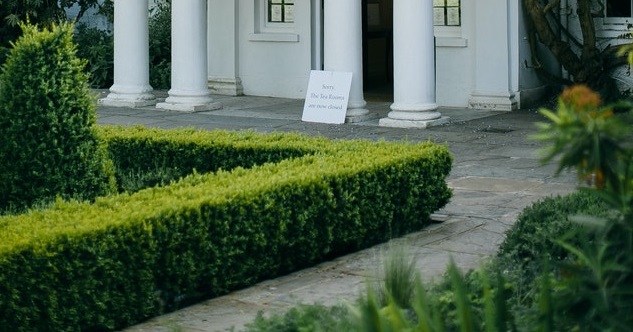
- Cost; Choose a hedge plant that is easy to establish and maintain.
- Multipurpose trees, Your Fence can also be a source of Firewood, soil fertility, food, Fodder and Fibre. Grow legume trees like the Calliandra, Leucaena and Sesbania that you can prune for animal fodder. You can then use the dry branches for firewood. For human food, you can plant guava and mulberry for fruits or the moringa trees for vegetables. Additionally, you can train climbing vines into the fences for fruits and vegetables. The most common species incorporated in these are the passion fruits, aerial yams, air potatoes, chayotes and cucurbit family species like the gourds, luffa and pumpkins.
- Landscaping; Looking for natural beauty? Consider a plant that is evergreen throughout the year, second, go for the flowering and ornamental species like rose flowers and hibiscus that you can trim to beautiful hedges. The other tip is planting a variegated plant like the duranta species to add color in your drive ways.
- Maturity: If your goal is privacy, grow the fast growing herbs that will give you thick and tall height. Examples include the coniferous species like pine and cypress, Kei apple and the white bottlebrush.
- Security; combine your live fence with a chain link, barbed wire fence or consider thorny plants like Kei-apple, acacia species and bougainvillea to discourage human and animal intruders.
- Climate: the drought resistant fencing trees types like the yellow Oleander, acacia an cactus are more suitable in hot lowlands. If you are in a wetter highland, you can grow cypress and Bougainvillea. The Indigenous species grow naturally and easy to augment in your region, However they take long to mature, you may have to plant exotic species if you are looking for fast growing hedges
- Look for herbs types that do not lower farm productivity if you are marking land boundaries.
- Mixed Hedges; Your fencing trees for choice many be vulnerable to diseases and pests, to avoid losing your whole fence in case of an outbreak grow a mixed hedge from various plant types that can complement each other.
Read Next : Which are the best ornamental trees Kenya?
A list of the best live fencing plants/trees in Kenya
Which is the best fencing plants for homeowners and landscapers in Kenya? In our list, we have listed ten of the commonly used in the region. The cactus, acacia and euphorbia are suitable for dry areas.
1. Kei-apple
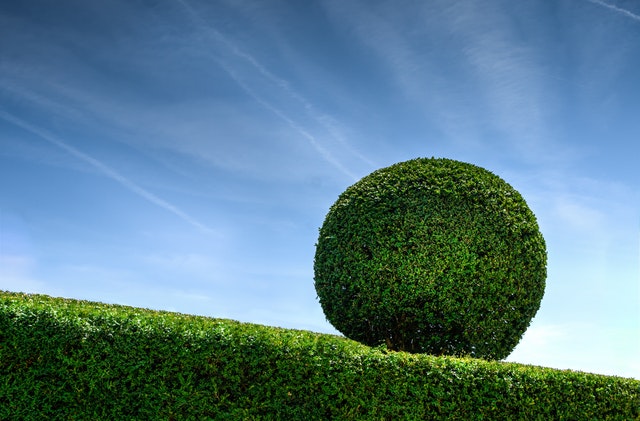
The Kei apple is also known as mkokola, Kayaba, or Kau apple. Its one of the best live fences that is raised from the dovyaliscaffra or Iberia caffra plant. The plant species is native to Namibia in Southwest Africa along the River Kei. It grows best in sandy soils making it a suitable fencing plant in the lowlands, coastal and areas with saline soils. Besides, the plant is drought resistant.
The Kayaba plant has many thorns giving you the best hedge for security from intrusion by wild or livestock animals. You can make a Kei-apple fence from seeds or seedlings. The recommended spacing is 3 to 5 ft (0.9-1.5 m) apart. To note, the plant is unfit for land fences. It produces a biochemical that inhibits the growth of other nearby plants.
The plant belongs to the family Flacourtiaceae. Besides its use as a hedge, you can use its fruits for human food. Its recipe ideas include making jam and jelly or pickles.
2. Cypress
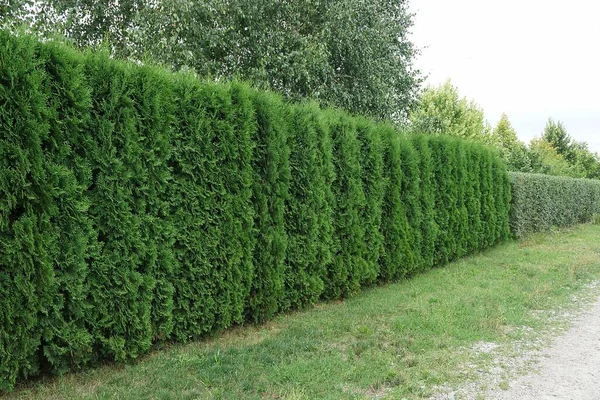
Cypress is one of the best coniferous hedge plant in areas with high rainfall. Its hedges are lush, pretty and fast growing. Once you establish it, it is free of maintenance. The species is drought and heat resistance. Since they have a thick growth, they are the best choice hedge plant for privacy. Besides, their Soft foliage and non-prickly greenery is great for families with kids and dogs!
The recommended spacing distance for cypress hedge is 6 to 10 feet apart for quick privacy. For straight-line traditional privacy, plant your trees about 8 to 10 feet apart. If you are looking for security consider a spacing of approximately 6 to 8 feet apart on a diagonal or zigzag pattern by planting them in 2 rows.
The three types of cypress trees in Kenya are the Monterey Cypress, Italian cypress, or the Arizona cypress. Besides the cypress species, the other related trees of the same family are the junipers, thuja green giants, cedar, and fir.
3. Duranta
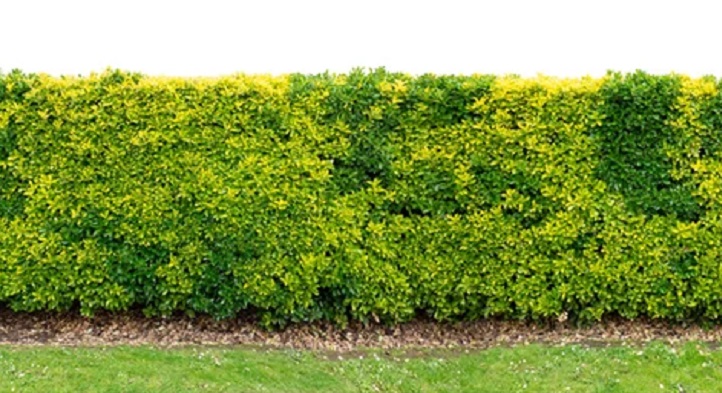
The variegata Duranta is the most common hedge plant from more than 30 different species of the evergreen plant. It is one of the fast growing hedge plants in Kenya if you are looking to establish an ornamental hedges over a short time.
The Duranta species has several beautiful variegate varieties that you can consider The common types of duranta plants are
- ‘Golden Edge’: It has Light green leaves centered with a golden edges
- ‘Sapphire Showers’: this duranta has White or cream variegated leaves on edges
- Alba’: This plant forms clusters of white flowers.
Duranta hedges are easy to establish in well-drained moist and fertile soils. They grow extremely fast and need frequent pruning. Some varieties can also have small thorns making it a good choice for security pathways.
4. Lantana
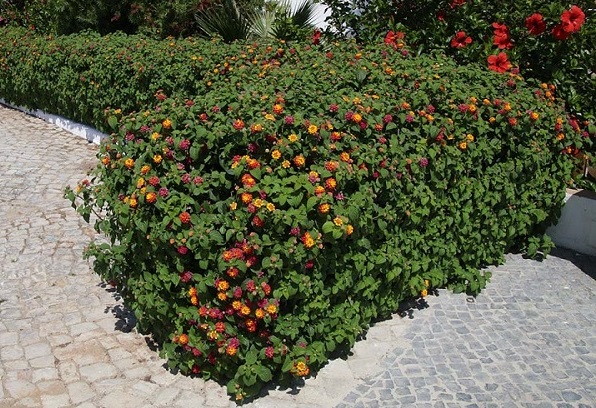
Lantana hedges (Lantana spp.) hedges can bloom all summer, attracting hosts of bees, butterflies and hummingbirds to your garden. It has bushy growth habit and its blooming makes it a good candidate for a hedge. The Lantana species is tolerant to most soil types, but prefers rich, well-draining soil that is slightly acidic. Mulch with pine needles to increase soil acidity. Lantana can reach 2 to 6 feet tall and 3 to 10 feet wide. Though there are 150 different species, those most widely available to home gardeners are Lantana camara and modern hybrids.
To get a good hedge, plant it at a spacing of 36-48 inches (90-120 cm). You can propagate it using stem cuttings. You can plant the Pink, Magenta (pink-purple), Red, Orange, Bright Yellow or the Medium Purple types.
5. Tithonia
Tithonia or the Mexican sunflower is one of the widely used hedges in Kenya. It is a multipurpose plant and can use it for ruminant and rabbit fodder, fuel, compost and land demarcation. It is native to Central America and Mexico.
You can easily propagate tithonia hedge by direct seeding or by planting of 20-30 cm long cuttings from green stems, at a spacing of 0.5-0.75 m x 0.75 m The plant produced large quantities of biomass you can use to make green manure.
6. Cactus Plants
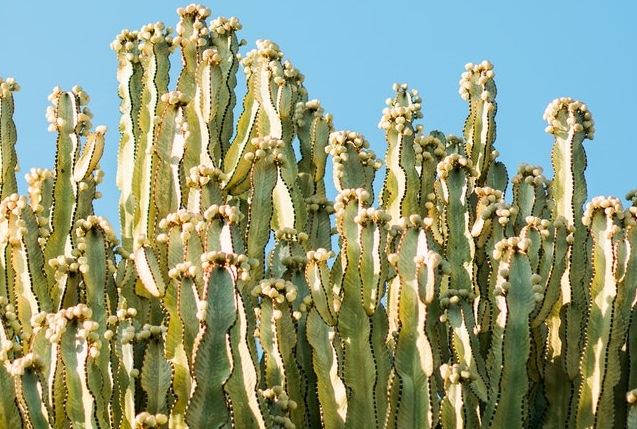
The above seven (7) hedge plants are best for areas with high or medium rainfall volumes. The last three are suitable for areas classified as either arid or semi-arid. These comprise almost 80 % of land mass in Kenya. These include the cacti, acacia and euphorbia tree types.
You can grow more than 1500 cactus species and varieties. Cacti plants are succulent plants. They have fleshy, water-storing branches. Cacti are drought tolerant and survive well during warm, dry periods, making them an easy-to-care-for landscape plant. Check for spacing requirements on the cactus variety before planting. The best cactus types you can establish for your fences and landscaping are-
- Buckthorn cholla,
- Barrel cactus,
- Prickly pears,
- Aloe Veras
- Agaves (Sisals)
- Totem pole cactus
- Saguaro Cactus
- San Pedro Cactus
7. Acacia Species
Acacia species has hardy thorns that easily deter livestock and humans from farms and your home. The three types you can use for hedges are the Acacia brevispica, Acacia nilotica, Acacia tortilis. These are most suitable in areas classified as dry semi-arid like Isiolo and wajir counties To use acacia for hedges exercise caution as they may be too thorny to have near houses as children may suffer
8. Finger Euphorbia
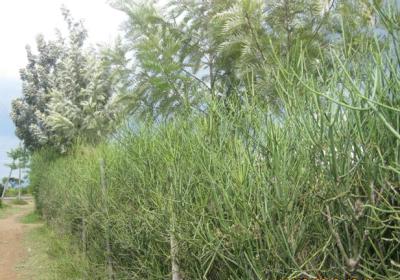
The last hedge plant in our list is the finger euphorbia or the pencil cactus. Its local names are Kamba (Ndau), Kikuyu (kariaria) or Swahili (Mtupa mwitu). It is an extensively used hedge plant in dry, hot areas. areas of East Africa. It is easy to establish and an ideal species for agroforestry offering little shade and do not affect soil fertility like Kei-apple.
You can propagate the kariaria fences from cuttings. Plant them close together for strong non-penetrable fences. To make sure it does not grow wild, trim and top-prune it regularly.
9. Bougainvillea
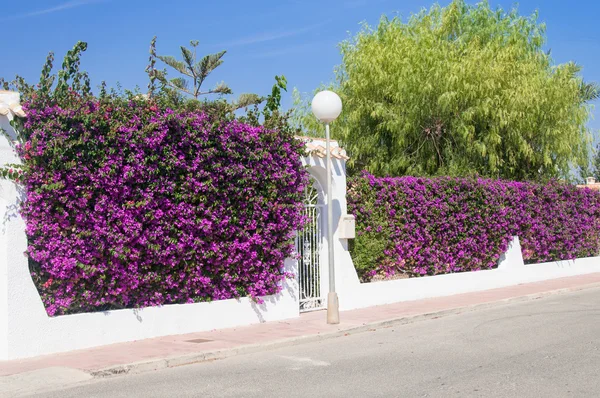
Bougainvillea is one of the most preferred fence plant in Kenya. This tree type originates from South America. It is now widely distributed throughout the tropics. The evergreen crop has a small actual white flower that is shielded by a cluster of three brightly colored bracts. Landscapers have interbred Bougainvillea species into many different flower colors, growth forms and hybrids. The common types available in Kenya have long vines that can climb up to 12 meters with long strong thorns. You can interwove the vines into strong impenetrable hedges for security as well as beauty.
You can propagate the Bougainvillea hedges from cuttings. Plant them in a 1m by 1m by 60cm deep with well-packed compost and bone meal. Train it early in its growth stages. Otherwise, it will grow wild into thick overgrown bushes
10. Bamboo
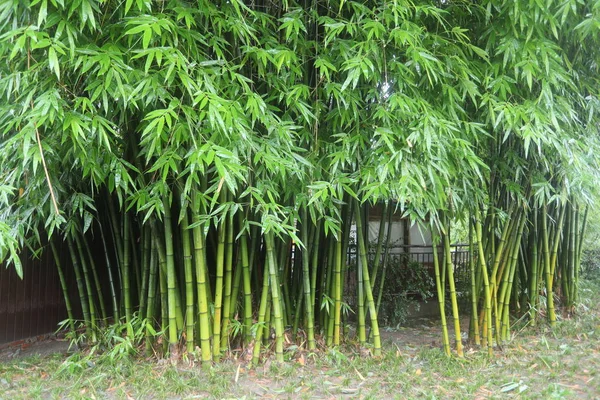
Bamboo fences are fast growing and very low in terms of maintenance. The bamboo are extremely invasive and you may consider the less invasive types or grow them in containers placed along the fence.
For a living barrier fence, order for the Hedge bamboos either the Phyllostachys glauca or the Bambusa guangxiensis. These types have strikingly beautiful canes that grow compact. The two are naturally bushy right down to the ground. It will give you a beautiful bamboo hedge with a very graceful appearance.
Why live fences?
Apart from upgrading your home from a stone and glass and lifeless apartment to a leafy suburb. Here are the other benefits of growing the fast hedge plants for life fences listed in this post. These are; –
Use hedges to mark a boundaries, whether between properties or within them.
These natural barriers will keep away human or livestock intruders to your property for security and safety. Besides, the life fences can greatly improve the privacy of your homes, offices and other private facilities like child swimming pools and basket courts.
It is cheaper to establish and maintain a hedge fence on your perimeter wall, walkways and drive ways than constructing expensive permanent walls. What would be the cost of fencing a quarter acre lot that requires 209 feet (64 meters) of fencing? According to fixr study, the cost making a stone or timber fence with labor and materials ranges from $2,270 to $5,760. On the other hand, the overall cost to establish a hedge is $1,730 to $2,350.













Comments
Post a Comment